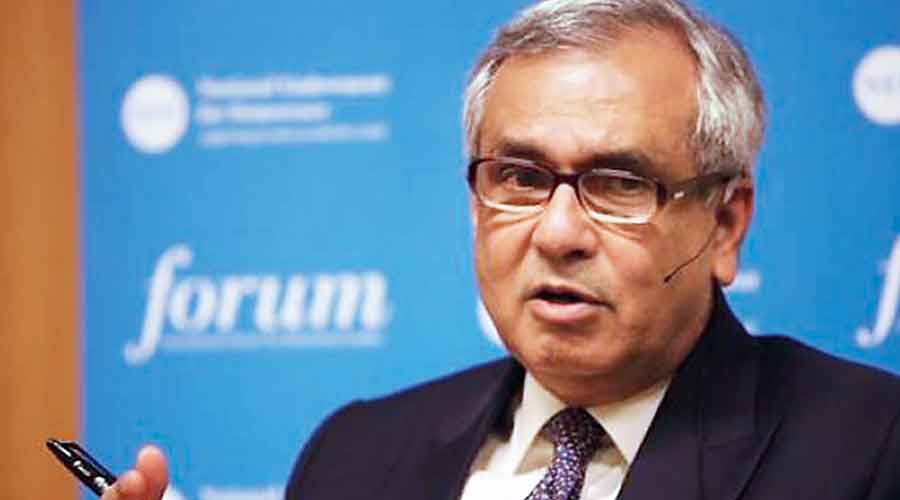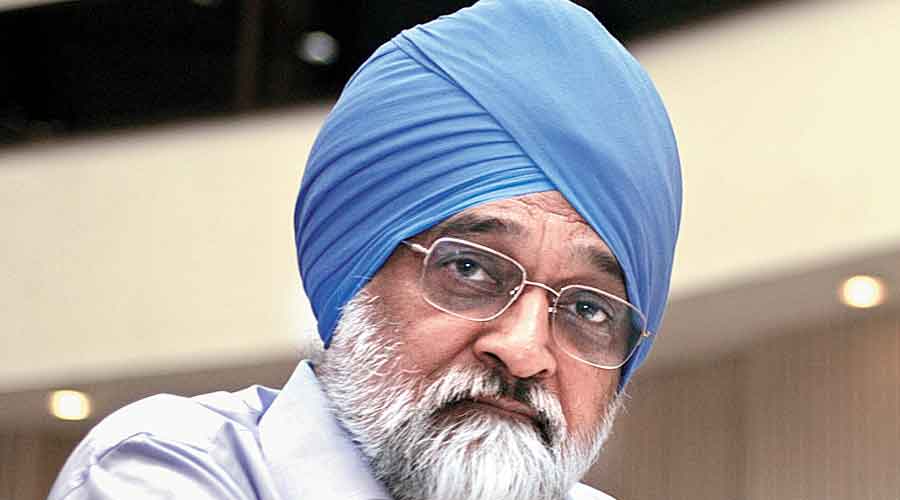Any debate on forecasting growth in the Indian economy is fraught with a great deal of risk — given the fact that the threat of the Covid pandemic hasn’t fully receded before the world has been violently shaken by Russia’s invasion of Ukraine, triggering extreme volatility in oil and commodity prices.
When the ABP Network decided to throw together two of India’s leading economists – Montek Singh Ahluwalia and Rajiv Kumar to crystal ball gaze into the future, it was obvious that the enchanting discourse that would ensue would turn into a subtle game of cut and thrust.
There’s a bit of history here: Montek Ahluwalia was the deputy chairman of the Planning Commission.
Rajiv Kumar is the vice-chairman of the Niti Aayog, which is a revisioned avatar of the old plan panel.
At the debate organised at the Mumbai’s Grand Hyatt on Saturday, the two economists started off with a quibble over the size of the Indian economy and the pace of real growth.
Rajiv Kumar started off by suggesting that the Indian economy would grow by 8-8.5 per cent in 2022-23. “If we can grow at a rate of 8 per cent over a sustained period — as we did between 2003 and 2011 — then we can double the economy in seven to eight years,” he said.

Rajiv Kumar.
The size of the Indian economy is currently assessed at anywhere between $2.7 to 3 trillion. Kumar believes that the Modi government’s slogan of creating a $5 trillion economy will be achieved long before 2030.
“The government is prepared to cede space to the private sector which will be the driving force to achieve this sustained rate of growth,” he added.
Montek Ahluwalia argued that it is always catchy to encapsulate objectives in terms of a slogan. “But to say that we are going to reach a $5 trillion goal is not very much different from saying we are going to reach a certain rate of growth. The traditional metric has always been the GDP growth rate.”
Ahluwalia seemed to suggest that Rajiv Kumar was lowballing the target by talking about doubling the economy. “It’s not fair to talk about achieving a $5 trillion target by 2024 because of the pandemic. So, let’s look at the revised target which, I am told, is $10 trillion by 2030” — an assertion that Rajiv Kumar chose not to contest.
The former deputy chairman of the Planning Commission then started to dissect this $10 trillion target. “In order to reach $10 trillion by 2030 — and working with an international inflation rate of 3 per cent in dollar terms — you would need to grow at somewhere around 11 per cent every year over the next nine years... If the government commits itself to that, then it is wonderful. Everybody would like the economy to grow rapidly,” he said.
But Ahluwalia said he felt that in the current context, this was an unrealistic target. “Even China, over a long period, did not average more than 10 per cent,” he added.
The two economists agreed that the next stage of reforms would have to be taken up by states which would have to grapple with contentious issues relating to agriculture and the power sector. But they differed completely on Rajiv Kumar’s assertion that India needs to work towards a new rule-based world order instead of splitting up into regional trade blocs.
Ahluwalia instead believed that we need to accept that there is no likelihood of reviving the spirit of the World Trade Organisation; instead India ought to join Japan’s initiative of reviving the Trans Pacific Partnership (TPP) minus the US since Donald Trump famously withdrew from the grouping in January 2017.











